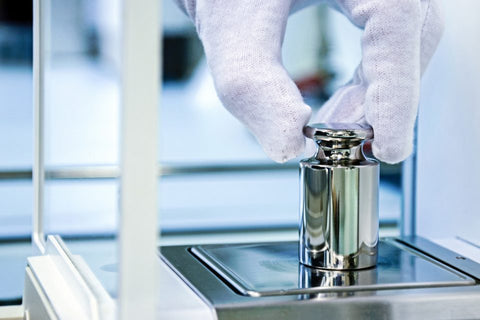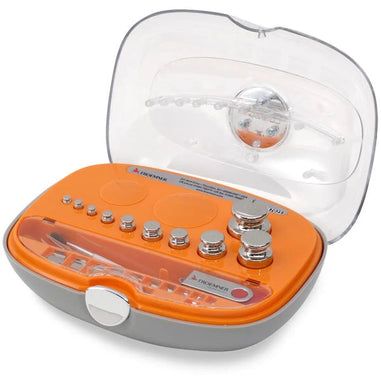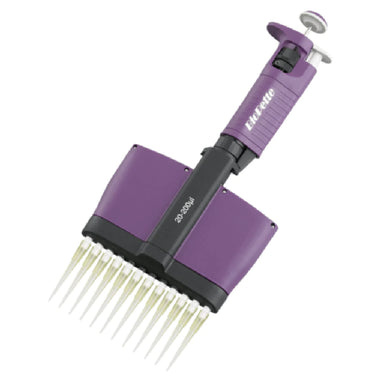- No products in the cart.
In the realm of quality control, calibration plays a crucial role in ensuring consistency, accuracy, and compliance with industry standards. By calibrating measuring instruments and equipment, organizations can maintain the integrity of their measurements, establish reliable benchmarks, and meet regulatory requirements. In this blog, we will delve into the significance of calibration in quality control, exploring its impact on product quality, process efficiency, and overall customer satisfaction.
There are two main types of calibration:
- Internal calibration: This is the process of calibrating measuring instruments within a company.
- External calibration: This is the process of calibrating measuring instruments by a third-party laboratory.
The type of calibration that is used will depend on the specific requirements of the company.
There are many benefits to calibrating measuring instruments. These benefits include:
- Increased accuracy: Calibration ensures that measuring instruments are accurate, which can lead to improved product quality.
- Reduced errors: Calibration can help to identify and correct errors in measurements, which can lead to improved product quality.
- Increased efficiency: Calibration can help to improve the efficiency of production processes, as it can help to identify and correct problems early on.
- Reduced costs: Calibration can help to reduce costs by identifying and correcting problems early on, which can prevent costly recalls and repairs.

Establishing Reliable Standards:
Calibration is vital for establishing and maintaining reliable standards. By calibrating measuring instruments to recognized national or international standards, organizations can establish a traceable reference point for their measurements. This traceability ensures consistency in measurements across different instruments and laboratories. With reliable standards in place, organizations can confidently demonstrate the accuracy and comparability of their measurements, contributing to product consistency and facilitating collaboration with external stakeholders.
Meeting Regulatory Requirements:
Calibration is a critical aspect of regulatory compliance in various industries. Regulatory bodies, such as the Food and Drug Administration (FDA) or the International Organization for Standardization (ISO), often mandate regular calibration of measuring instruments and equipment. Compliance with these requirements ensures that organizations meet the necessary quality and safety standards for their products or services. Failure to comply with calibration regulations can result in costly penalties, reputational damage, or even legal implications. Therefore, calibration plays a vital role in enabling organizations to meet regulatory obligations and maintain their credibility in the market.
Factors That Can Affect Accuracy
There are many factors that can affect the accuracy of measuring instruments. These factors include:
- Environmental conditions: Environmental conditions such as temperature and humidity can affect the accuracy of measuring instruments.
- Usage: The way that measuring instruments are used can also affect their accuracy. For example, if a measuring instrument is dropped, it may become inaccurate.
- Age: Measuring instruments can become inaccurate over time.
It is important to calibrate measuring instruments on a regular basis to ensure that they are accurate. The frequency of calibration will depend on the specific requirements of the company.
There are many different methods that can be used to calibrate measuring instruments. The method that is used will depend on the specific type of measuring instrument.
Some common methods of calibration include:
- Comparison: This is the process of comparing a measuring instrument to a known standard.
- Traceability: This is the process of linking the accuracy of a measuring instrument to a national or international standard.
- Direct measurement: This is the process of measuring the accuracy of a measuring instrument directly.
Calibration is an essential part of quality control. It ensures that measurements are accurate and consistent, which can lead to improved product quality, reduced errors, increased efficiency, and reduced costs.
Here are some additional tips for ensuring the accuracy of measuring instruments:
- Use only calibrated measuring instruments.
- Store measuring instruments in a clean, dry environment.
- Handle measuring instruments with care.
- Inspect measuring instruments regularly for signs of damage.
- Calibrate measuring instruments according to the manufacturer's instructions.
Calibration is a fundamental aspect of quality control, contributing to accuracy, reliability, and compliance. By ensuring accurate measurements, establishing reliable standards, meeting regulatory requirements, improving process efficiency, and enhancing customer satisfaction, calibration plays a pivotal role in maintaining consistency and quality in various industries. Organizations that prioritize calibration as part of their quality control efforts can reap the benefits of improved product quality, optimized processes, and enhanced customer trust. As technology and industry standards evolve, it is essential for organizations to embrace calibration as an integral part of their quality control processes to stay competitive and meet the ever-increasing demands of their stakeholders.
For over 40 years, Lab Pro Inc. has been committed to delivering the highest quality lab equipment, scale calibration services, chemicals, lab balances and scales, lab supplies, and cleanroom PPE apparel to medical device companies and laboratories worldwide. To learn more contact us online or at 888-452-2776.












































